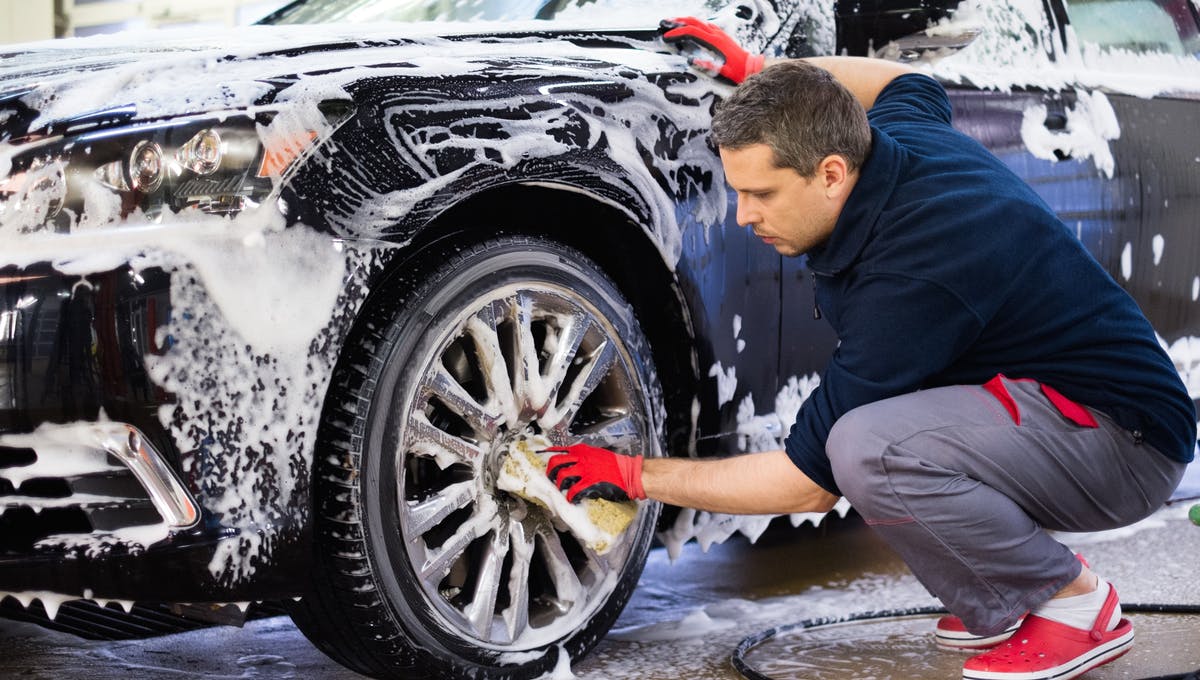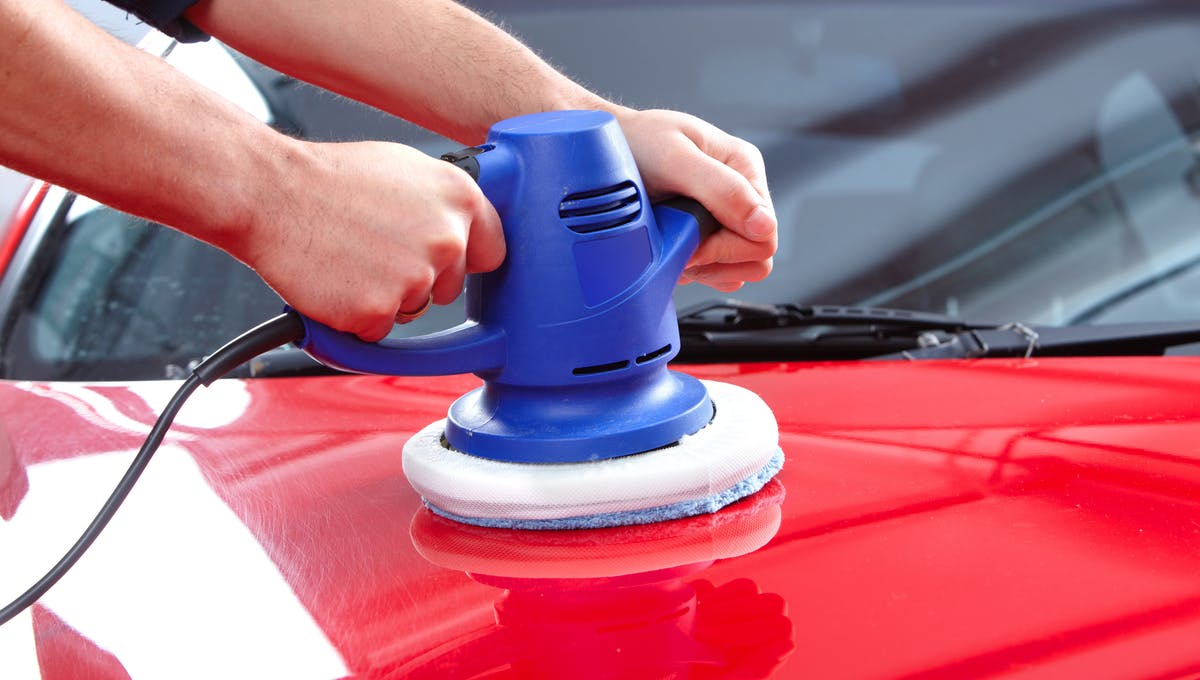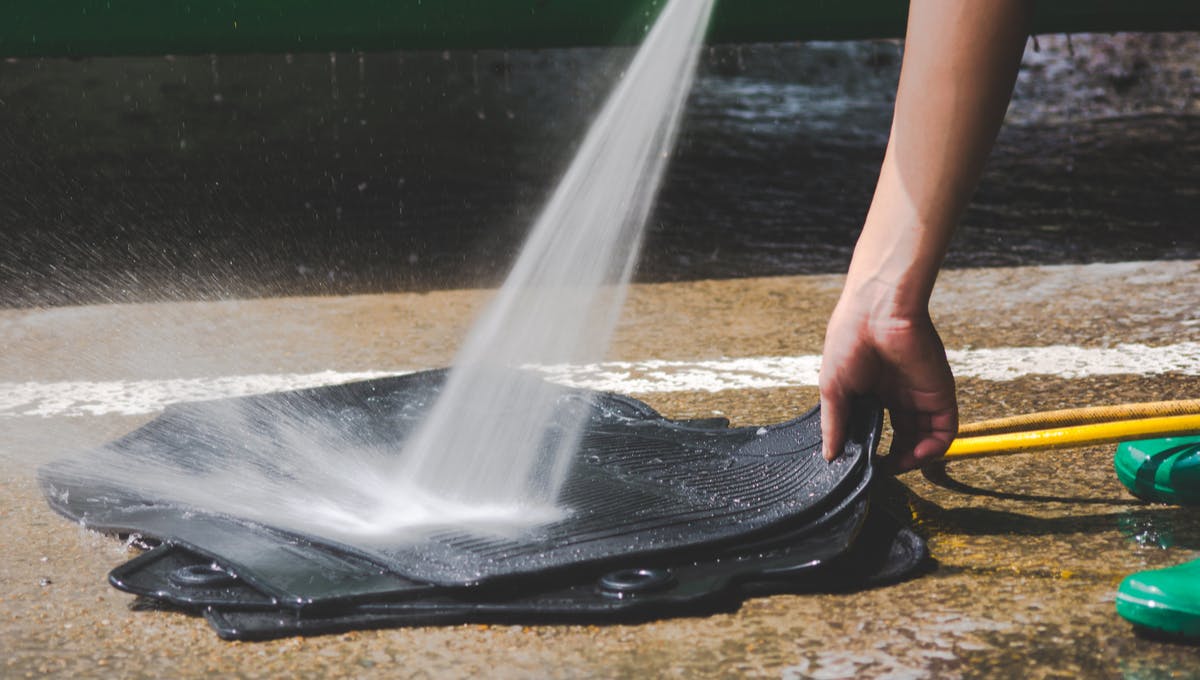How To Wash A Car: The Ultimate Guide
What's Covered
- Introduction
- What can I use to wash my car at home?
- How to wash a car with a pressure washer
- How to wash a car without a hose
- How to clean your windscreen and windows
- How often should you wash your car?
- How to wax your car
- Cleaning your car interior
- Cleaning your car seats
- How to clean car carpet and mats
- Cleaning your car engine
- Conclusion
We all do it. Guiltily climb into our cars, pretending we don’t notice the build-up of dirt and bird poop clinging to the paintwork, and drive off promising to get it done. Maybe this weekend. Maybe the next.
Sometimes, it’s not until we catch our car getting side-eyed by passers-by that we really think:
“Alright... time to wash my car for real now.”
But it’s not always easy to work out what you should be using to clean your car. Sponge vs chamois, soap vs shampoo… it can be time consuming just working out the right products!
Unfortunately, we don't all have the time or money to be sending our car off to be detailed. But that’s where we come in to help. In this ultimate guide on how to wash a car, we cover everything you ever wanted to know about washing the exterior and interior of your car yourself. And good news - if you need to wash your electric car, you can also use this guide!
It’s up to you whether you read the whole thing or dip in and out of the sections you need the most. Happy car cleaning!
What can I use to wash my car at home?
Before we dive into all the details, let’s run through what you’ll need to wash your car.
You might think you don’t have any of the products or equipment your detailer uses, but in reality, it’s probably a lot simpler than you think.
With the exception of a few products that we’d recommend to get the best finish, you can usually find a lot of the items around your house.
The Exterior
For washing your car’s paintwork, most of the products are relatively simple. You’ll just need:
- Two buckets
- A wheel brush and wheel cleaner
- Car shampoo (Avoid washing up liquid and soap as they can be abrasive)
- Microfibre wash mitts
- Microfibre towel
- A hose or pressure washer (if you haven’t got either the buckets will do)
The Interior
Your car interior may require some more unusual products, but in our how to clean car seats post, you’ll find a bunch of homemade alternatives.
To get started, we’d recommend having:
- A soft bristle brush
- Microfibre cloths
- Car upholstery cleaner or shampoo (material specific i.e. cloth/leather)
- A mini carpet cleaner (if you want to go all out)

How to wash a car with a pressure washer
If you already feel like car washing is tedious and tiresome, we hear you. While some people enjoy spending a long Sunday afternoon shining their car’s bodywork to perfection, others just want to get the job done.
But if you fall into the latter, one of the best ways to speed up the washing process is to use a pressure washer.
It might seem scary to use the same machine that hosed down years of grime from your paving slabs, but when done carefully, pressure washing has even the dirtiest of paintwork shining.
All you need is:
- Pressure Washer
- Two buckets
- Microfibre wash mitt
- Car Shampoo
- Microfibre drying towel
Here’s how to do it in just a few easy steps:
- Get your pressure washer ready - Set your pressure-washer to a moderate rather than high pressure, and test on a small area to ensure it’s not too rough on your car’s paint.
- Pre-rinse your car - This is where pressure-washers shine, as there’s no need to lug buckets of water over your whole car. With the appropriate attachment and pressure, rinse from the top down. We’ve got a whole post on how to clean alloy wheels, but it’s handy to rinse them off at this point.
- Wash - Add your car shampoo to one of the buckets, and using your shampoo covered mitt, begin to wash the rest of the dirt away starting from the top. A gentle up and down or sideways wash will help minimise any swirl marks.
- Rinse the mitt - Try to work around your car in sections, rinsing your mitt in clean water each time to prevent rubbing dirt back into any part of the car.
- Rinse the car - Using your pressure washer again, rinse your car from the top down to clear away any remaining dirt or shampoo residue.
- Dry - With a clean microfiber towel, carefully dry off your car.
The process should take just up to an hour, and is far quicker than doing it all by hand. Just be careful to avoid running the pressure washer over your headlights, as this can ruin the coating. When cleaning car headlights, it’s better to be safe and wash them yourself with a microfibre cloth or mitt.
How to wash a car without a hose
Without the assistance of a pressure washer or hose, washing your car by hand can feel a little intimidating.
When you haven’t done it before, or have a car that’s at the point of looking grey rather than white, it can seem like a daunting task. So, if washing your car by hand really isn’t appealing, don’t fret. You always have the option of using a car wash.
But if you’re ready for the challenge, we’re here to help guide you on what to use and how to get the best results when washing without a hose.
It’s best to start off prepared, so you’ll need:
- Two buckets
- Microfiber wash mitt
- Car Shampoo
- Microfibre drying towel
- Microfibre cloths
When you have all your items together, you’re ready to get started.
- Fill one of your buckets with tap water, and pour over your entire car to rinse off loose dirt and debris. Keep this bucket for plain water, so that when you rinse later, you’re not using soapy water.
- Following the car shampoo instructions, mix with water in your second bucket.
- Using your shampoo and damp microfiber mitt, wash from the top of the car down. Though sponges are a popular choice, microfiber wash mitts are extra effective and gentle on your car, preventing swirl marks.
- Work in sections to avoid spreading dirt around, and ensure no area gets missed.
- Wash your wheels with our post on cleaning alloy wheels, replacing the pressure washer section with rinsing using your water bucket.
- Refill your water bucket, and when you’re happy that the car is fully clean, rinse again to get rid of any suds.
- Dry off your car to prevent water spots. From top to bottom, use your microfiber towel (and a separate one for wheels). Ensure your towel is 100% clean before using to dry, as any ingrained dirt will risk scratching your paintwork.

How to clean your windscreen and windows
With your paintwork looking spic and span, you might notice that your car still doesn’t quite look its best. Often this comes down to the little details, and in many cases, not having separately washed your windscreen and windows.
Though your car wash should remove the bulk of most dirt, it won’t give your windows that shine you’re looking for. Thankfully, you don’t need much to get them sparkling. Just some lint free microfiber cloths and an alcohol-based glass or window cleaner.
It won’t take long, and can be done in these quick 4 steps:
- Carefully lift windscreen wipers away from the glass, and spray with your glass cleaner.
- Wipe up and down in vertical lines, then horizontal lines with your microfiber cloth.
- Lift your wipers away, spray your windscreen cleaner onto them, and wipe downwards to clean away grime.
- Using a clean microfiber cloth, buff the windscreen in small circular motions for a streak-free shine.
The best methods differ slightly for your interior and exterior glass, so check out our specific posts on how to clean your car windscreen and how to clean windows for more detail.
How often should you wash your car?
Now that you’ve got your clean car back, you really want to keep it that way with a car cleaning schedule specifically for your vehicle.
As a general rule, it’s a good idea to be cleaning your car around every two weeks. But depending on your circumstances, you may need to wash more or less frequently.
Warmer climates generally face less issues with the elements, whereas car owners in cooler climates are more likely to get hit with mud, salt and snow. Car storage can also play a huge factor, as keeping your car outdoors can mean it accumulates a multitude of dirt. Storing your car in a sheltered space or garage ensures it’s more protected, and requires much less frequent washing.
If you’re not sure that your quarterly wash is doing the trick, check out how often you should wash your car.
How to wax your car
Having transformed your car from dull to dazzling with our expert washing tips, the best way to maintain that showroom shine is protect your car with wax or sealant.
Waxing gives your car an extra sheen, and helps protect it against the damage of direct sunlight, sleet, water marks, and even those annoying stains from bird droppings (see how to remove bird poop on your car).
In our post on how to wax your car, we cover the best products to use, and how to wax by hand or with a buffer. While a buffer could save time and energy, it also comes with a risk. If you don’t learn to operate it properly, you could end up damaging your paintwork. Hand waxing on the other hand takes more time and effort to carry out, but gives the same result without the risk.
Just choose the option that appeals more, then check how often to wax your car.

Cleaning your car interior
There’s no pretending that we don’t all show a little extra attention to our car exteriors. When you’re driving down the street, your super clean car seats aren’t what’s catching the attention of passers by.
It’s also pretty unlikely that anyone other than yourself and your passengers have to witness the horde of juice bottles and food wrappers that you’ve managed to collect.
You know it's time to clean your car’s interior plastic trim when it has faded from it’s shiny black, and your car seats are covered in a plethora of stains, which even the glossiest of exteriors can’t justify.
Luckily, keeping a clean and tidy car interior has a number of benefits. You won’t have to look for any old excuse not to give your colleague a lift, and you’ll likely increase your resale value, or avoid lease car return charges. So what is the best way to clean your car interior?
Cleaning your car seats
Your car seats are a great place to start, as they’re one of the easiest (and quickest) places to get dirty.
In our post on how to clean car seats, we give you an overview of the best methods to use, so here we’ll give a quick run down:
- Vacuum your car - Having a clean, hair and grime free vacuumed car will really speed up the overall cleaning process.
- Warm water only - For vinyl and leather, it’s extra important to use water just warm enough to clean, as boiling and hot water can mark the material.
- Use a Microfiber cloth - Lint free microfiber cloths are handy as you can use them on cloth interiors without trying to scrape off fibres later.
- Apply water moderately - Too much water is a quick way to ruin your interior, and could leave pesky water stains. Plus, it’s not ideal to be waiting days or weeks for your car to dry out.
- Consider the material - Use material appropriate methods and products. Leather car seats will require a softer bristled brush than cloth car seats, and you’ll find specific car upholstery cleaners like cloth, vinyl or leather cleaner.
We’ve got in-depth guides for how to clean specific car seat materials, so if you’re ready to start cleaning your interior, check out our posts on:
When cleaning your car seats, it’s also worth taking a look at how to clean your car headliner. Often your headliner will be finished with the same material as your seats, so it should be fairly simple to do at the same time.
How to clean car carpet and mats
Your car’s carpet and mats get stomped and stood on every time you use your car, but with so much else to clean, they’re fairly easy to forget about.
Unfortunately, racking up layers of dirt, snow and mud can leave significant wear on your car mats. If you have kids that like to find any and every awkward position to sit in, you’re probably transferring all that dirt to your seats too.
In our how to clean car mats post, we cover what cleaning products and tools to use for both rubber and carpet mats. Cleaning car carpet can be a little more tricky if it’s built into your interior, as you have to try to get into every nook and cranny. In most cases you should be fine to follow the same instructions as cleaning your car fabric, using an upholstery cleaner or shampoo.

Cleaning your car engine
Last but not least, we can’t forget about the car engine. Though your car might be gleaming on the outside, grime and grease could be clogging up under your hood.
Cleaning the components that keep your car running like the engine and fuel injectors, will keep your car running smoothly and could even help you spot any issues.
Just be sure to wait for your car to cool if it’s been running, as hot engine components aren’t easy or safe to deal with.
Like with any other electrical components, go easy on the water to avoid causing damage to any electrical components.
Enjoy your clean car!
If you completed even some of the steps in our ultimate guide to washing your car, consider us impressed.
Though it might seem easier to send your car off to the detailer, taking the time and effort to wash and clean your car yourself can save you a tonne of money.
Now you can sit back (or lie down if you completed them all), and enjoy your sparkling clean car.
What's Covered
- Introduction
- What can I use to wash my car at home?
- How to wash a car with a pressure washer
- How to wash a car without a hose
- How to clean your windscreen and windows
- How often should you wash your car?
- How to wax your car
- Cleaning your car interior
- Cleaning your car seats
- How to clean car carpet and mats
- Cleaning your car engine
- Conclusion


